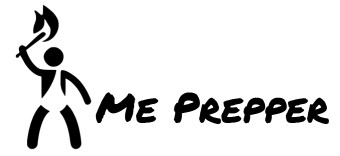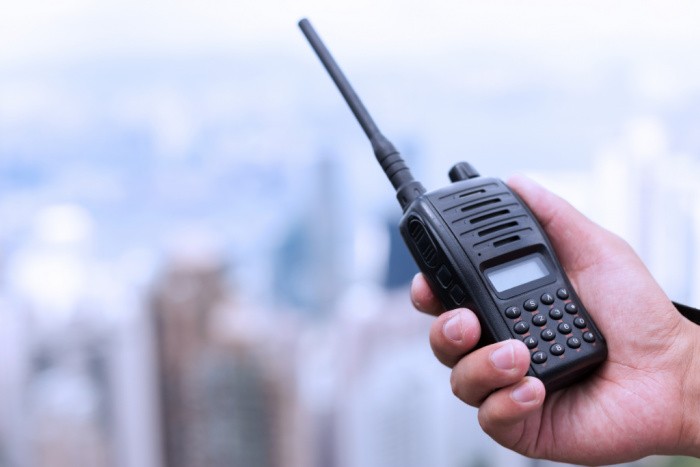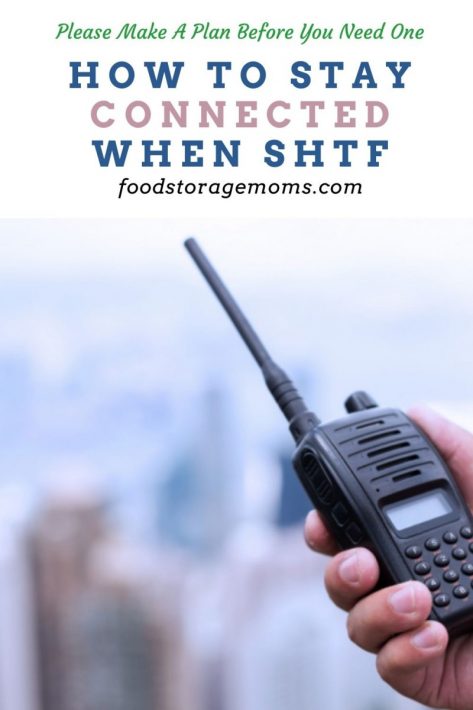If you’re new here, you may want to subscribe to my RSS feed. Thanks for visiting!
(Psst: The FTC wants me to remind you that this website contains affiliate links. That means if you make a purchase from a link you click on, I might receive a small commission. This does not increase the price you’ll pay for that item nor does it decrease the awesomeness of the item. ~ Daisy)
by Fabian Ommar
The developed world, accustomed to safety, convenience, and comfort, is facing a slow-burning SHTF called Thirdworldization by some. Each time humankind faces some tribulation like the one we’re currently going through, it feels like the world is coming to an end. In many senses, the threat is present: a pandemic is a serious SHTF. It IS the end for many.
But the real SHTF isn’t just the pandemic – it’s the effects on the system that Selco warned us about from the very beginning.
The ramifications of such events as Covid-19 and government responses are real and long-lasting. Despite theories surrounding COVID-19 (conspiratorial or not), the fact is real damage has happened to the economy and our lifestyle. To those who say we’ve been through a lot since March 2020, I’d argue we haven’t yet seen the full range of consequences. Objectively, we’re not even out of the pandemic.
The question remains: how and when will this Thirdworldization play out?
I concede this doom-and-gloom talk is growing old and burning out even among preppers. But we’re not talking probabilities: it’s already happening.
We must face reality and accept things are not going back to normal any time soon (if ever). It may indeed get worse before it starts getting better again. It’s past time to stop waiting for Black Swans and pay attention to subtle changes already underway.
It’s been a different SHTF for each country, each business, each family, and each person. On a more broad scale, there’s no way to tell for sure whether it will be a storm, “the” perfect storm,” or something in between. These things unfold slowly – the proverbial frog in the pot (until they catch up). As always, multiple interests and powerful forces are acting simultaneously in different directions, which means lots of possible ramifications.
Global crises affect countries in different intensities and manners
Global-scale SHTF hit some places faster and worse than others. Good and bad are never evenly distributed. The capacity of a nation and its population to withstand and overcome disaster depend on many factors. These include the size, strength, and resiliency of the economy. Also, how solid, functional, and credible the institutions are, the social fabric’s stability, etc.
Those and others dictate whether a country will suffer more or less the effects of a global economic setback. But as it’s happening with the pandemic, no one will come out unscathed: some will feel the impact of migration, others (eventually) by war. At the same time, some will see internal conflicts, currency devaluation, martial law, coups, political instability, social eruptions, and more. Much of that is already taking place in various places around the globe.
It’s impossible to get the timing right or know what will happen, but trends can be forecast
These and other events are hitting differently even inside the same country: some regions are “normal,” while others suffer badly. That’s one of the factors driving the migrational movements within the U.S. Many people are moving to different states. People go wherever they receive better treatment.
You should already have a grip on your local zeitgeist. If you don’t, maybe it’s a good idea to start paying attention to the social, political, economic, and institutional moods in your piece of land. That will help tell which way things go when SHTF. You don’t want to get caught on the wrong side of the fence if it happens.
And that’s how we get to Thirdworldization
Thirdworldization is a slow-burning SHTF for those living in developed countries, used to comfort, convenience, and security.
Thirdworldization is the gradual and inevitable impoverishment of a rich country. It is the visible effect of major crises hitting square on the population, institutions, corporations, and even the government. It spreads insidiously in every aspect of daily life and .
Less growth means less wealth, less money circulating for everyone to take care of necessities and obligations. This shrinking economy brings all sorts of declines that affect services, infrastructure, the supply chain, institutions, and changing the population’s lives and routines.
The economy has a direct impact on the structure and foundation of social order. As an engineer, I tend to analyze structures and foundations by force of my work before assessing other factors. If those are in bad shape, the rest can’t be good. That holds true for a family, a company, a city, or a country.
The standard of living is dropping significantly everywhere
Even though the rich are getting richer, they will be affected by the destruction of the middle class and the poor becoming miserable. The wealthy don’t build their own houses, grow their own food, nor collect their own trash. But like rich countries and corporations, they’re much less affected because wealth can soften the blow and pay for a lot during hard times – or should I say, especially during hard times.
For the rest (the great majority of society), there’s SHTF as the unfolding of the economic decline is reflected in various aspects as described below.
Crime on the rise is shocking America. Many factors contribute to that: joblessness, homelessness, financial struggle, disillusionment, and anger. Dwindling resources mean a reduction in the capacity of governments and authorities to keep society safe. There’s an overall defunding of not only the police but the entire crime-fighting apparatus: ostensive, preventative, and investigative work, departments of justice, social support, prisons and corrections, everything.
How it plays out: All kinds of crimes jump and tend to become more violent, too. Expect (and prepare for) rises in everything from minor scams to drug traffic (and consumption), bank robberies, kidnappings, arson, home invasions, homicides. Honest citizens may not engage in violent actions, but bribing, corruption, extortions, black market, misappropriations, tax evasion, and others become widespread. Sociopaths and psychopaths feel more emboldened: rapes, killings, vengeance acts, gang wars, fights, and similar also tend to increase.
Homelessness exploded in the U.S. and other western countries in 2020. It’s still on the rise with no signs of getting better anytime soon. Some argue it’s not as bad as it would have been (and can become) without the aggressive forbearance and moratorium programs implemented by governments. But this has side effects. What will happen when these suspensions end? And if they extend, what will be the unintended consequences? It is hard to predict, but eviction waves could throw millions into the streets in months and years ahead if the crisis worsens. Homelessness can also get boosted by mass migration, as we’ll see below.
How it plays out: During the 1930’s Great Depression, cities everywhere saw the growth of squatter areas and shantytowns. New York’s Central Park became , a giant slum right in the middle of America’s biggest and wealthiest city at the time. Whole areas in L.A., San Francisco, and many other towns across the U.S. have already become tent cities. These are ripe for crime, exploitation, drug trafficking, violence, disease, and political manipulation.
Immigration is serious and can turn into major geopolitical issues in some regions. Migration waves can be impossible to contain, as people desperately try to flee conflicted countries searching for better conditions elsewhere, even at great risks. Sudden, large internal movements can create imbalances internally and bring unforeseen consequences. People leave cities for the country or move to other states to avoid the rising taxes and crime, loss of freedom, or other threats.
How it plays out: Countries in better shape could face massive migration waves. The entire network of support put in place to control, minimize impacts, and give immigrants support can weaken. Significant or sudden movements may overwhelm border control. Immigrants in large numbers can cripple social support systems. That makes things harder for the population, sparking crime and violent actions from both sides.
Private Services and Products
Manufacturers and companies across the board are required to cut costs everywhere to stay afloat or keep profits. It reflects directly on the quality and variety of products and services provided to the population.
How it plays out: There will be an overall drop in quality and more inferior ingredients used to manufacture items and produce food. We will experience crowded, inefficient, slow customer support by poorly trained and low-paid workers. Strikes may cause disruptions and delays.
Public Services
I have friends living in wealthy, developed countries. They complain a lot about the quality of public services, the bureaucracy, the inefficiency. Sure enough, it’s (almost always) subpar when compared to private counterparts. But they have no idea how good they have it compared to underdeveloped or even developing places. They don’t know how bad this can get. Is USPS’s announcement that a glimpse of things to come?
How it plays out: Overwhelmed systems, (even more) disincentivized agents. Longer lines, longer waiting, slow or no response, more bureaucracy, squandering, etc. Many welfare programs will go extinct. There will be lower-quality education, transportation, childcare, healthcare, etc. Strikes and corruption are other effects of the Thirdworldization of public services
Without constant investment in maintenance, expansion, and rebuilding, the entire infrastructure becomes derelict. More than 50 bridges have collapsed worldwide since 2015. Roads will be in dire need of maintenance. Billions of gallons of treated water get lost daily in leakages (estimates talk about one water main break every two minutes in the U.S.). . Airports and ports will postpone expansions and modernizations, and so on.
How it plays out: Despite talks of megalomaniac infrastructure programs everywhere to “save the economy and promote growth” (governments love doing this when crises erupt), disruptions, rationing, supply rotations, closings, and more are much more frequent during prolonged recessions.
Trash removal and disposal drains a large portion of city and state budgets. As it happens to other public services, once tax revenue drops, these impacts and effects can drag on for years. Sewage and water treatment systems cease expansion and quality and safety drops. Does anyone remember the
“Nearly half a decade has passed since the water crisis in Flint captured the attention of America, during which toxic water was delivered to a city of nearly 100,000 people for 18 months before the state acknowledged the problem.”
How it plays out: Those who watched the movie Joker may remember the streets full of trash, rats, and graffiti. Many 80’s movies have that decadent “look and feel.” Dim cities, with boarded-up storefronts and “for rent” or “sale” signs everywhere. That’s the portrait of slow-burning SHTF. What’s missing in films is the smell, the diseases, the flies, rats, and insects present in real life.
Inflation, Deflation, Taxation, and Confiscations
The inflation vs. deflation debate is raging among the macroeconomic experts right now. It’s a hard bet as there are pressures for both to turn out. And indeed, both could take place at the same time (in different areas). It’s that crazy. Prices are already all over the place, with inflation running hot in some items/sectors and deflation in others. Whatever happens, rest assured the “non-essentials” (that’s you, me, and the 99%) will be called to foot the bill, so get prepared for that.
How it plays out: Price fluctuations, insecurity, bank runs. Rises in fuel affect prices of everything else. Inflation can show in perversely subtle ways: dilutions and reductions in quantity/portions effectively raise products’ price. Shortages and a drastic reduction in product variety are other common effects of highly dysfunctional economies. Taxation will explode – this is already being talk-tested everywhere.
Confiscations can happen, too. One day after taking office in 1990, the newly elected government in Brazil seized money from bank accounts “on grounds to reduce liquidity and fight rampant inflation.” The seizure left citizens without their savings and only 50k in currency. It was a stupid plan that didn’t work (it should’ve caused a revolution, but I digress). Such insanities have happened in other places in recent times. They could happen again because governments can become dictatorial and change laws and rules or do anything if conditions are in place (desperate times).
Some other third-world things that first-world people might not know about (yet)
Just like countries are affected differently, so do the various layers of society. High levels of inequality exacerbate some bizarre distortions people living in rich and developed countries might have only seen in dystopian movies. But the things listed below exist and could become a reality if things keep going south.
Social contract
Large social inequalities are incredibly poisonous: they destroy the social fabric faster than you can say “who messed with my stimulus check?”.
Two very adverse effects are radical divisiveness and a rise in crime and violence. It affects everybody, from top to bottom: trust in other people, institutions, and even in the collective disappears. It becomes impossible to lower the guard, and that is stressful. And even for those fortunate enough to get by okay, it sucks to live in a society where most of the population is struggling so hard (and failing) to live with a minimum of decency. How can someone be genuinely happy surrounded by misery? The answer is, no one can.
High Walls
In unsafe societies, every house and building has high (as in 10ft. tall or higher) protection walls, either masonry or steel bars, lockers, cameras, electrical fences, and barbed wire (concertina). For citizens accustomed to open front yards and unprotected houses, it looks like a bunch of high-security prisons (only it’s in reverse: the ones “locked” are the rich trying to stay safe from the violent mobs).
The “favelas” (slums) of Rio de Janeiro are worldwide famous, shown as “communities” where everyone is friendly and loves to dance to the samba. It is a vibrant and unique scene in some places, but the reality is that many are unsafe, unhealthy places where drug traffic and militia rule with iron hands. The government and public power have almost no presence and oversight: there’s little to no sanitation and safety, health, education, and other precarious services. If the standard of living drops for long enough, slums may become a lot more common in countries and places where they previously didn’t exist.
Private security
Off-duty cops do double-duty as security agents or consultants for companies, commerce, and individuals, either as private guards, security personnel, or security consultants. It’s not legalized but also not enforced, nonetheless a big thing, an organized multimillion-dollar business with huge companies competing with each other.
Armored vehicles
In 2014 Brazil already had the most extensive fleet of armored cars globally (not an enviable title). I’m not talking about expensive, luxury cars driven by (or for) the ultra-rich, high-profile personalities and figureheads: even the middle-class look for ballistic protection, especially for women and children. It’s a big industry here. Much bigger than in conflicted nations. Criminals are armed and violent, even against the police. When crime soars, the armoring industry booms.
Preparing for the possibility of Thirdworldization
There are no downsides to investing in awareness, creativity, mentality, and determination (and some preparations).
These are not predictions. Perhaps a chronicle of what happens in poorer countries and has happened before in rich ones during crises. We can already see some signs and even developments, and if you believe this kind of SHTF is somehow coming your way, you may want to prepare. Here are few tips that might help:
Have you noticed a reduced standard of living in your area?
Have you seen a reduced standard of living in your area or a wider disparity between rich and poor? Are you noticing any of the Thirdworldization effects happening near you or are there some things you’ve seen on the news that surprised you when you realized they were happening here? Do you expect the decline to continue to worsen? Let’s discuss it in the comments.
About Fabian
Fabian Ommar is a 50-year-old middle-class worker living in São Paulo, Brazil. Far from being the super-tactical or highly trained military survivor type, he is the average joe who since his youth has been involved with self-reliance and outdoor activities and the practical side of balancing life between a big city and rural/wilderness settings. Since the 2008 world economic crisis, he has been training and helping others in his area to become better prepared for the “constant, slow-burning SHTF” of living in a 3rd world country.
Fabian’s ebook, Street Survivalism: A Practical Training Guide To Life In The City, is a practical training method for common city dwellers based on the lifestyle of the homeless (real-life survivors) to be more psychologically, mentally, and physically prepared to deal with the harsh reality of the streets during normal or difficult times.
You can follow Fabian on Instagram @stoicsurvivor
This content was originally published here.




